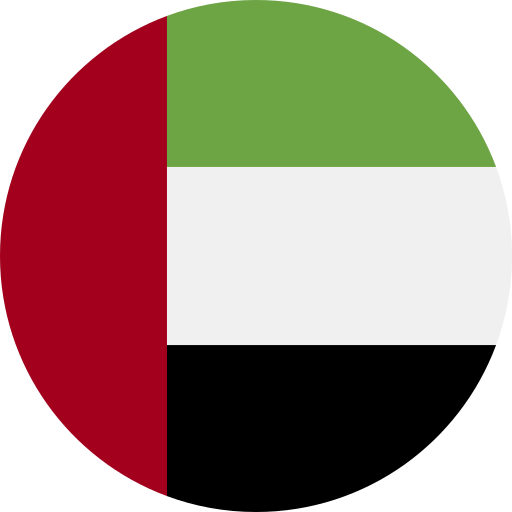Key Takeaways
- Diverse Dialects: Arabic dialects vary significantly across regions, each with unique phonetic features and vocabulary influenced by local languages and cultures.
- Major Dialect Groups: Key groups include Maghrebi (North Africa), Levantine (Eastern Mediterranean), Gulf Arabic (Arabian Peninsula), Egyptian, and Sudanese Arabic, each showcasing distinct characteristics.
- Cultural Influence: Historical events, migrations, and cultural exchanges have shaped the evolution of these dialects, enriching the language landscape.
- Urbanization Impact: Urbanization leads to dialect mixing in cities, fostering hybrid speech patterns that reflect both traditional roots and modern influences.
- Media’s Role: Television, films, and social media play a crucial role in disseminating various dialects and contemporary slang, enhancing familiarity among speakers.
- Learning Challenges: Limited resources for studying specific dialects can hinder learners; understanding political and social factors is essential for navigating these complexities.
Ever wondered why Arabic sounds so different depending on where you are? The Arabic dialect diversity worldwide isn’t just fascinating; it can be a real challenge for learners and travelers alike. From the melodic tones of Levantine to the distinct rhythms of Maghrebi, each dialect brings its own flavor, making communication both rich and complex.
Overview of Arabic Dialect Diversity Worldwide
Arabic dialect diversity showcases a wide range of linguistic variations across the globe. Each region possesses unique characteristics that contribute to the richness of the language. For instance, dialects in North Africa, known as Maghrebi, exhibit distinct phonetic features and vocabulary influenced by Berber, French, and Spanish languages.
In contrast, the Levantine dialects spoken in countries like Lebanon and Syria highlight melodic tones and expressive intonations, making them particularly engaging for communication. Gulf Arabic presents another variation with its own set of idiomatic expressions and cultural references specific to Arabian Peninsula countries.
The differences among these dialects can create challenges for learners or travelers navigating various regions. Understanding local nuances proves essential in effective communication. While Modern Standard Arabic serves as a common formal language used in media and literature across Arab nations, it lacks the regional flair found in everyday conversations.
Recognizing this diversity enriches your appreciation for Arabic culture and helps you connect better with speakers from different backgrounds. By embracing these variations rather than viewing them as obstacles, you enhance your understanding of a vibrant linguistic landscape that spans continents.
Historical Context of Arabic Dialects
Arabic dialects reflect a rich tapestry of history and culture. Their evolution stems from various historical events, migrations, and interactions with other languages.
Influence of Regional Languages
Regional languages significantly shaped Arabic dialects. For instance, the Maghrebi dialects incorporate elements from Berber, French, and Spanish due to centuries of cultural exchange in North Africa. Similarly, Gulf Arabic exhibits influences from Persian and English, especially in urban areas. Such linguistic blending creates unique idiomatic expressions that define local speech patterns and enhance communication.
Migration and Cultural Exchange
Migration played a crucial role in the development of Arabic dialects. As communities moved across regions for trade or refuge, they carried their linguistic nuances with them. This movement fostered cultural exchange that enriched local dialects while also introducing new vocabulary and pronunciations. For example, the Levantine dialect reflects significant influences from Turkish due to historical ties between the two cultures. These interactions highlight how migration continues to shape language dynamics across the Arab world today.
Classification of Arabic Dialects
Arabic dialects exhibit significant diversity, classified into several major groups based on geographical and linguistic characteristics. Understanding these classifications provides insight into the intricate tapestry of Arabic communication.
Major Dialect Groups
- Maghrebi Dialects: Spoken in North African countries like Morocco, Algeria, Tunisia, and Libya, Maghrebi dialects reflect influences from Berber languages as well as French and Spanish.
- Levantine Dialects: Found in Lebanon, Syria, Jordan, and Palestine, Levantine dialects are known for their melodic tones and have absorbed vocabulary from Turkish due to historical connections.
- Gulf Arabic: This group encompasses dialects spoken in Saudi Arabia, Kuwait, Oman, Qatar, Bahrain, and the UAE. Gulf Arabic features unique idiomatic expressions shaped by Persian influence in urban areas.
- Egyptian Arabic: Predominantly spoken in Egypt, this widely understood dialect has made its mark through media and entertainment while incorporating elements from various cultures.
- Sudanese Arabic: Influenced by local languages such as Nubian and Beja, Sudanese Arabic showcases distinct phonetic variations that set it apart from other dialects.
Key Characteristics of Each Group
- Maghrebi Dialects:
- Pronunciation varies significantly across regions.
- Contains a wealth of French loanwords.
- Levantine Dialects:
- Known for their rich emotional expression.
- Often incorporates slang that reflects current cultural trends.
- Gulf Arabic:
- Characterized by its use of specific terminology related to trade and pearl diving.
- Influences from English are especially prominent in modern usage.
- Egyptian Arabic:
- Features a simplified grammar structure making it accessible to learners.
- Has a strong presence in film and music which aids familiarity among non-native speakers.
- Sudanese Arabic:
- Unique vocabulary reflects the country’s diverse ethnic groups.
- Phonetic elements make it distinct; for example, some consonants may be pronounced differently compared to other dialects.
Recognizing these classifications not only enhances your understanding of regional nuances but also enriches interactions with native speakers across different contexts.
Current Trends in Arabic Dialects
Arabic dialects continue to evolve, reflecting cultural changes and societal dynamics. Understanding these trends is essential for effective communication in various contexts.
Urbanization and Dialect Mixing
Urbanization drives significant changes in Arabic dialects. As people migrate to urban centers, they bring unique speech patterns from their rural origins, leading to a blend of dialects. In cities like Cairo and Dubai, you encounter diverse linguistic influences that create hybrid forms of speech. This mixing fosters new expressions and terminologies while maintaining roots in traditional dialects. Additionally, youth culture often embraces slang from various regions, further enriching the language landscape.
The Role of Media and Technology
Media plays a crucial role in shaping contemporary Arabic dialects. Television shows, films, and online platforms expose audiences to different regional accents and colloquialisms. As content creators use specific dialects for authenticity, viewers become more familiar with variations beyond their own spoken language. Moreover, technology facilitates communication across borders through social media channels where users share local phrases or expressions globally. This interconnectedness encourages mutual influence among dialects while preserving individuality.
Understanding these current trends enhances your ability to engage with native speakers effectively. Being aware of how urbanization impacts language can improve interactions while appreciating the role of media helps you connect on a deeper level through shared cultural references.
Challenges in Studying Arabic Dialect Diversity
Studying Arabic dialect diversity presents several challenges that can complicate effective communication. Understanding these difficulties enhances your approach and appreciation for the rich tapestry of Arabic languages.
Limited Resources and Documentation
Limited resources often hinder learners’ access to comprehensive materials on various Arabic dialects. Most educational content focuses on Modern Standard Arabic, leaving regional variations underrepresented. Few textbooks or online courses cover specific dialects extensively, making it tough for you to find relevant learning tools. Additionally, many dialects lack formal documentation. This absence makes linguistic research difficult and creates gaps in understanding local nuances and expressions.
Political and Social Factors
Political and social factors significantly influence the study of Arabic dialect diversity. Regional conflicts or instability can limit academic research opportunities or prevent collaboration among scholars from different areas. Moreover, social attitudes toward certain dialects may affect their prestige or desirability as subjects of study. For instance, some communities may prioritize Modern Standard Arabic over local dialects due to its perceived authority in media and education. Consequently, these dynamics further complicate efforts to engage with the diverse array of spoken forms across the Arab world.
Recognizing these challenges allows you to navigate language learning more effectively while fostering deeper connections with native speakers through understanding their unique cultural contexts.
Conclusion
Embracing the diversity of Arabic dialects opens doors to richer cultural experiences. By understanding local nuances you enhance your ability to communicate effectively in various contexts.
The evolution of these dialects reflects historical interactions and migrations that continue to shape them today. As you navigate through different regions you’ll find that each dialect not only carries its own unique flair but also tells a story of cultural exchange and adaptation.
Recognizing the challenges faced in studying these variations empowers you to approach language learning with a more nuanced perspective. Engaging with native speakers while appreciating their linguistic backgrounds fosters deeper connections and enriches your overall experience in the Arabic-speaking world.
Frequently Asked Questions
What are the main Arabic dialect groups?
Arabic dialects can be classified into major groups based on geographical and linguistic characteristics. These include Maghrebi, Levantine, Gulf Arabic, Egyptian Arabic, and Sudanese Arabic. Each group has unique features influenced by local languages and historical contexts.
How do regional influences shape Arabic dialects?
Regional influences play a crucial role in shaping Arabic dialects. For example, Maghrebi dialects incorporate elements from Berber, French, and Spanish, while Gulf Arabic shows influence from Persian and English. These interactions create rich variations in pronunciation and vocabulary.
Why is understanding local nuances important for communication?
Understanding local nuances is essential because it enhances effective communication with native speakers. Dialects often contain idiomatic expressions and cultural references that aren’t present in Modern Standard Arabic, making regional knowledge vital for meaningful interactions.
What challenges do learners face when studying Arabic dialects?
Learners often struggle with limited resources focused on various dialects since most educational materials prioritize Modern Standard Arabic. Additionally, political factors may restrict research opportunities or social attitudes might devalue local dialects compared to standard forms.
How are current trends affecting the evolution of Arabic dialects?
Current trends such as urbanization and youth culture are reshaping Arabic dialects as people blend rural speech patterns with urban ones. Media exposure also plays a significant role in creating hybrid forms of communication while preserving individual accents within communities.







